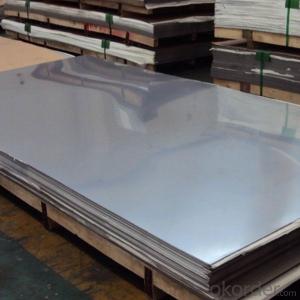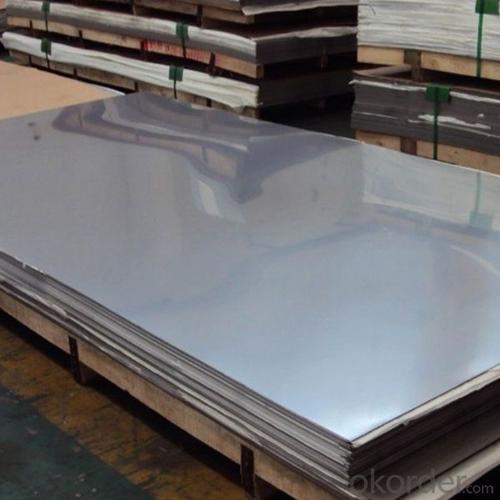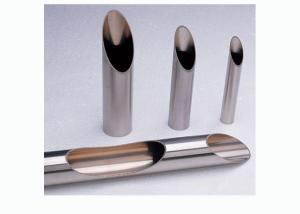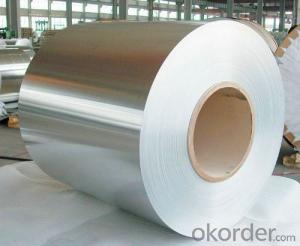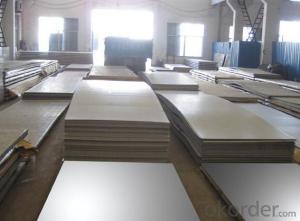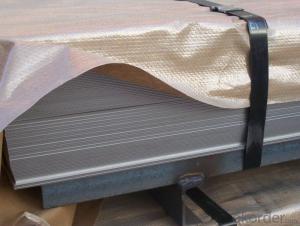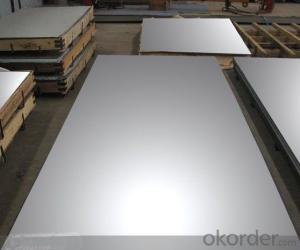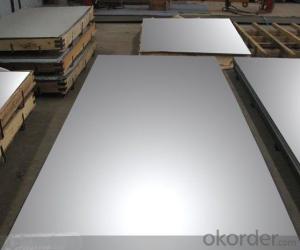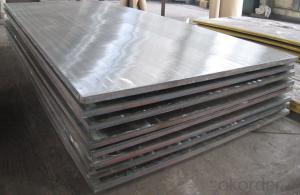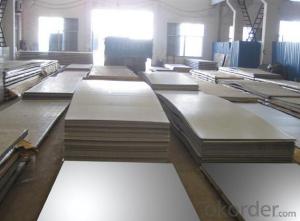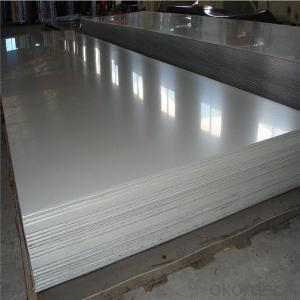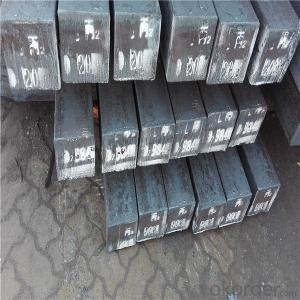Carbon Steel Plate Price Per Ton Made In China
- Loading Port:
- Tianjin
- Payment Terms:
- TT OR LC
- Min Order Qty:
- 50 m.t.
- Supply Capability:
- 20000 m.t./month
OKorder Service Pledge
OKorder Financial Service
You Might Also Like
Specification
DESCRIPTION FOR CARBON STEEL PLATE
Product | carbon steel plate price per ton |
Place of origin | Tianjin,China mainland |
MOQ | 25 tons |
Thickness | 1mm-200mm |
Width | 1000mm-3000mm |
Length | 1000mm-2000mm |
Application | widely |
Standard | AISI,ASTM,BS,DIN,JIS,GB,etc |
Grade | A572,A573,A633,A678,A709,A710,G3101,G3136,etc |
Tpye | Steel plate |
Surfacing | Coated |
Productive Technology | Hot Rolled & Cold Rolled |
Price | FOB USD 500-900 per ton |
Port | TIANJIN,SHANGHAI |
Payment Terms | L/C,T/T,Western Union,MoneyGram |
Product Ability | 1000 tons per month |
Delivery | 10 days after deposit or according to customers' quantity |
Packing | standard seaworthy export packing or as the request of customers |
PACKING:
1.Big thickness:by bulk vessel
2.Small thickness:packed by steel strips and shipped by container
3.According to the requirements of customers'
TRADE TERMS :FOB, CFR, CIF
DETAILED PICTURES FOR STEEL COILS
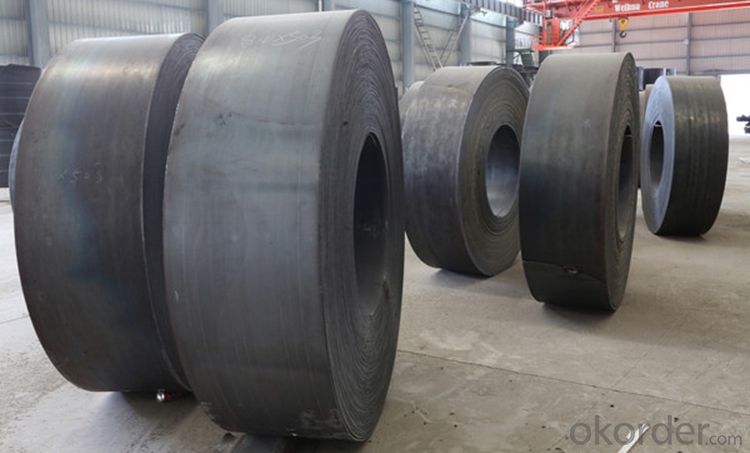
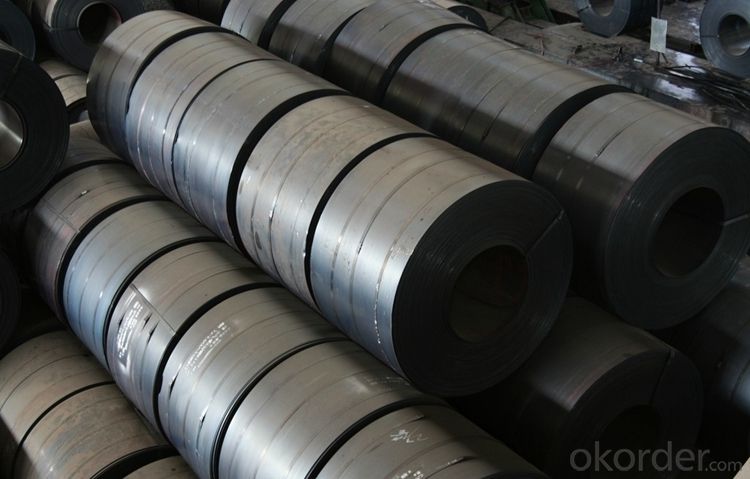
PACKAGING &DELIVERY FOR STEEL COILS/SHEETS
Packaging Detail Standard export packing or following customer's demand
Delivery Time: Within 30-40 days after deposit or according to the order quantity
OUR SERVICE
1.High quanlity and reasonable price.
2.Customized on-demand.
3.Reasonable shipping and fast delivery.
4.Free sample.
FAQ:
Q:You are Factory or Trading Company?
A:We are factory,our main products include Steel plate,Steel Bar,Steel coils.
- Q: How do you restore the shine on a stainless steel sheet?
- To restore the shine on a stainless steel sheet, you can start by cleaning the surface with warm water and mild dish soap to remove any dirt or grime. Then, rinse the sheet thoroughly and dry it with a clean cloth. Next, apply a small amount of stainless steel cleaner or vinegar onto a soft cloth and gently rub the surface in the direction of the grain. Finally, wipe off any excess cleaner and buff the sheet with a dry cloth to restore its shine.
- Q: Can stainless steel sheets be bent?
- Yes, stainless steel sheets can be bent. Stainless steel is a versatile material that can be easily formed into various shapes and configurations, including bends. The ability to bend stainless steel sheets is dependent on the thickness and composition of the material. Thinner sheets are generally more flexible and easier to bend, while thicker sheets may require specialized equipment and techniques. It is important to note that the bending process may cause the stainless steel sheet to lose some of its strength and durability, so careful consideration should be given to the specific application and requirements before attempting to bend stainless steel sheets.
- Q: Can stainless steel sheets be used for decorative backsplashes?
- Yes, stainless steel sheets can be used for decorative backsplashes. Their sleek and modern appearance, durability, and resistance to stains and corrosion make them a popular choice for adding a stylish and functional element to kitchens or other spaces.
- Q: What are the different surface patterns available for stainless steel sheets?
- Some of the different surface patterns available for stainless steel sheets include brushed, mirror, embossed, and patterned.
- Q: What are the different types of stainless steel sheet surface patterns for architectural purposes?
- Architectural purposes often call for the use of various surface patterns on stainless steel sheets. These patterns are achieved through different techniques, resulting in distinct appearances. Here are some of the popular surface patterns: 1. Brushed: By using a fine abrasive material, the stainless steel sheet is brushed to create a smooth texture with visible brush lines in one direction. This sleek and contemporary pattern is widely favored. 2. Mirror: Achieved by polishing the stainless steel sheet to a high shine, the mirror surface pattern reflects light like an actual mirror. It is commonly chosen for applications where aesthetics and visual impact are important. 3. Embossed: The surface of embossed stainless steel sheets features a raised pattern or design. This is achieved by pressing the sheet between rollers engraved with a specific pattern. It adds texture and depth to architectural applications. 4. Perforated: Perforated stainless steel sheets have evenly distributed small holes or perforations. These can come in various shapes and sizes, allowing for airflow, light transmission, and decorative effects. Façades, screens, and decorative elements often utilize perforated stainless steel sheets. 5. Etched: Etched stainless steel sheets feature designs or patterns that are chemically etched onto the surface. An acid-resistant material is applied and then selectively removed with acid, leaving behind intricate and detailed designs. This pattern is ideal for artistic and decorative purposes. 6. Hammered: Hammered stainless steel sheets have a textured surface resembling hammered metal. This effect is achieved by using a special hammer or mallet to create indentations and surface irregularities. It adds a rustic and handcrafted look to architectural projects. These examples showcase the variety of stainless steel sheet surface patterns commonly used in architecture. Each pattern possesses its own visual and textural qualities, enabling designers and architects to choose the most suitable option for their specific project requirements.
- Q: When milling the stainless steel plate, how can he deform?
- Our company has many special parts for stainless steel processing, the following are our experiences:1., processing stainless steel, when processing, do not stop pouring cutting fluid, to prevent thermal deformation
- Q: What are the different types of mirror finishes available for stainless steel sheets?
- There are several types of mirror finishes available for stainless steel sheets, including #8 mirror, 2B mirror, and 4 mirror.
- Q: What kind of screws do you choose for stainless steel plates?
- Because boards are often used for decoration, the best choice is not to be fixed with screwsJust use good glue, OKIf the plate is for other purposes, if the demand is not high, ordinary will do
- Q: Can stainless steel sheets be used for signage?
- Yes, stainless steel sheets can be used for signage. Stainless steel is a durable and long-lasting material that is resistant to corrosion, making it suitable for both indoor and outdoor signage. It has a sleek and modern appearance, which makes it a popular choice for various types of signage, including company logos, directional signs, nameplates, and even large outdoor billboards. Stainless steel sheets can be easily cut, engraved, or laser-etched to create customized designs and text, allowing for a wide range of creative options. Additionally, stainless steel signage is often chosen for its ability to withstand harsh weather conditions, UV rays, and vandalism, ensuring that the signage remains intact and legible for many years.
- Q: How is stainless steel different from other types of steel?
- Stainless steel is a type of steel that is different from other types of steel primarily due to its composition and unique properties. It contains a minimum of 10.5% chromium, which forms a thin and invisible layer of chromium oxide on the surface of the steel. This layer is highly resistant to corrosion, making stainless steel highly durable and long-lasting. Unlike other types of steel, stainless steel does not easily rust, stain, or corrode when exposed to moisture, air, or chemicals. This corrosion resistance makes it suitable for various applications where exposure to harsh environments is expected, such as in kitchen appliances, cutlery, medical equipment, and construction materials. Furthermore, stainless steel has excellent strength and durability, making it ideal for applications that require high structural integrity. It is also heat-resistant, maintaining its strength and shape even at elevated temperatures. This property makes stainless steel widely used in industries like automotive, aerospace, and construction. Moreover, stainless steel is highly hygienic due to its non-porous surface and resistance to bacterial growth. It is easy to clean and maintain, making it a popular choice for food processing equipment, medical instruments, and sanitary applications. In summary, stainless steel stands out from other types of steel due to its corrosion resistance, strength, heat resistance, and hygienic properties. These qualities make it a versatile material used in various industries and applications, where durability, longevity, and resistance to external factors are crucial.
Send your message to us
Carbon Steel Plate Price Per Ton Made In China
- Loading Port:
- Tianjin
- Payment Terms:
- TT OR LC
- Min Order Qty:
- 50 m.t.
- Supply Capability:
- 20000 m.t./month
OKorder Service Pledge
OKorder Financial Service
Similar products
Hot products
Hot Searches
Related keywords
